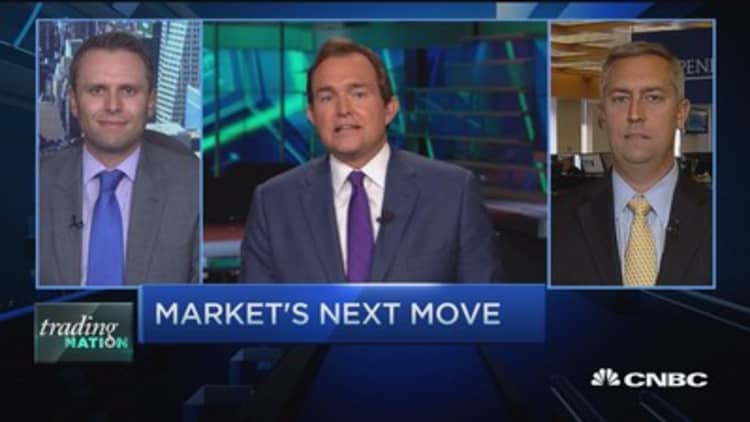
A key technical indicator is sending a signal that it hasn't since 2007, suggesting to one technical analyst that even after a 10 percent decline in the past three months, the still has further to fall.
Stocks head to lows, may be setting up for negative year
Jonathan Krinsky of MKM Partners is looking at the S&P's 12-month moving average, which averages out the prior year into just 12 data points.
"Because it only takes data once a month, it tends to take out a lot of the false signals," Krinsky said. "It's a very slow-moving average; it takes a long time to change directions. But when it does, we think you want to take notice."
The moving average has just turned from positive-sloping to negative-sloping for the first time in since 2007, Krinsky said. He views that as an important sign of the market's loss of momentum from high prices.
Needless to say, after the indicator rolled over in 2007, substantial losses were still ahead.
What's even more troubling is that prior to 2007, the moving average last turned negative in 2000.
"We don't think, necessarily, that we're in for anything like we saw in 2000 or 2007," Krinsky said Monday on CNBC's "Power Lunch." "But to ignore this long-term moving average turning from a positive to a declining slope would be a mistake."
In the shorter term, the technical analyst believes the S&P 500 is set to fall back to the late August lows of 1867, which is just a bit below where the index closed Monday.
A move to that level "would bring in the October 2014 lows around 1,820," Krinsky said. "And we do think you find some short-term stabilization around that area."
That's roughly in line with the call of Oppenheimer head of institutional portfolio strategy Andrew Burkly.
"We're viewing this as a bull market correction," meaning a drop of 10 to 15 percent. "Anything bigger than that — 15-to-20-percent-plus — I think you have to think about down-earnings, down-economy, and I just really don't see any evidence of that still."
A drop to 1,820 would take the S&P 14.7 percent below the all-time highs the index made in May.






